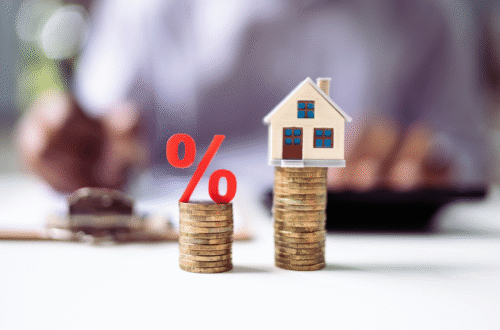
When is the Best Time to Buy Investment Property? Analyzing Market Trends and Timing Strategies
Timing can significantly impact the success of real estate investments. The best time to buy investment property is when market conditions favor buyers, such as during a downturn or when interest rates are low. Investors should remain vigilant and analyze market trends, as these factors can create prime opportunities for acquiring properties at favorable prices.
In addition to market conditions, understanding local economic indicators can aid in making informed decisions. Employment rates, population growth, and developments in infrastructure are crucial aspects to consider. Investors who pay attention to these elements often find themselves seizing opportunities that lead to profitable ventures.
Furthermore, patience is a vital component of a successful investment strategy. Rushing the process can lead to poor decisions, while waiting for the right moment ensures a better likelihood of yielding significant returns. Educated investors are those who continually assess market fluctuations and are ready to act when conditions align with their goals.
Factors That Influence the Best Time to Buy Investment Property
Several factors play a significant role in determining the optimal timing for purchasing investment properties. Understanding these can help investors make informed decisions.
Real Estate Market Cycles
Real estate markets experience cyclical movements characterized by expansion, peak, contraction, and trough phases. Typically, the best time to buy is during the contraction or trough phases when property values are lower. During these periods, there may be less competition from other buyers, allowing for more favorable negotiation terms.
Tracking local market indicators, such as inventory levels, average days on the market, and price trends, can provide insights into which phase the market is in. Utilizing this information helps investors capitalize on potential undervalued properties before the market shifts into the next expansion phase.
Interest and Mortgage Rates
Interest and mortgage rates are crucial factors influencing the affordability of investment properties. Lower rates reduce monthly mortgage payments, allowing investors to maximize returns. A decrease in rates often leads to increased purchasing power, making it an advantageous time to buy.
Monitoring economic indicators that affect these rates, such as inflation and Federal Reserve policies, can guide investors. Timing purchases to coincide with lower rates not only optimizes affordability but also increases the potential for cash flow and appreciation in value over time.
Local Job Market Trends
The local job market is a leading indicator of real estate demand. A robust job market boosts confidence among potential renters and buyers, thus driving up property values. Investors should analyze job growth rates, unemployment statistics, and major employers in the area.
When significant employers establish or expand operations, demand for housing typically increases. Assessing the implications of local job market trends can help investors determine when to enter the property market for maximum benefit.
Seasonal Fluctuations
Seasonal changes can significantly affect the real estate market. In many regions, spring and summer are peak buying seasons, as families prefer to move during school breaks. Conversely, winter often sees a slowdown in activity, resulting in more motivated sellers and potentially lower prices.
Investors may find opportunities in off-peak seasons when competition is reduced. Understanding these seasonal patterns allows investors to strategically time their purchases and take advantage of favorable market conditions.
Assessing Personal Readiness and Financial Situation
Before diving into the investment property market, it is essential to evaluate personal readiness and financial circumstances. This assessment will guide investors in making informed decisions aligned with their financial goals.
Evaluating Risk Tolerance
Understanding risk tolerance is crucial for investors. It dictates the type of properties they may consider and the financing options they will pursue.
Factors influencing risk tolerance include:
- Time Horizon: Longer investment horizons typically allow for greater risk.
- Market Knowledge: Familiarity with property markets can reduce perceived risks.
- Financial Stability: Individuals with stable incomes may be more willing to take risks.
Investors should reflect on their comfort levels concerning potential property value fluctuations and vacancy rates. A comprehensive risk assessment helps align investment choices with personal comfort levels.
Down Payment and Financing Options
The down payment is a significant factor in purchasing an investment property. Generally, a larger down payment lowers the monthly mortgage burden and may eliminate private mortgage insurance (PMI).
Typical down payment percentages for investment properties include:
- Conventional Loans: 20%-25%
- FHA Loans: 3.5% (owner-occupied)
- Portfolio Loans: Flexible options based on lender criteria
Investors must explore various financing options like conventional loans, portfolios, or alternative lending, each with its own terms. Comparing interest rates and repayment plans can determine which option best fits their financial situation.
Analyzing Cash Flow and Expenses
Cash flow analysis is critical for understanding profitability. Investors should calculate monthly income from rent versus anticipated expenses.
Key expenses include:
- Property Management Costs: Typically 8%-10% of rental income
- Maintenance and Repairs: Aim for 1% of property value annually
- Insurance and Taxes: Varies based on property location
A positive cash flow indicates that rental income surpasses expenses, which is vital for sustainable investments. Tracking all costs is essential to ensure profitability and avoid unexpected financial burdens.
Timing Strategies for Different Types of Investment Properties
Understanding the nuances of timing can significantly impact investment success. Various types of properties require different approaches based on market conditions and potential returns.
Single-Family Homes and Condos
The best time to purchase single-family homes and condos often aligns with seasonal trends. Generally, spring and summer months see increased buyer activity, which can drive up prices.
Investors may benefit from acting in the fall or winter when competition is lower, allowing for better negotiation. For example, during slower seasons, it might be easier to find a deal on condos for sale tucson, or elsewhere, making it a beneficial opportunity for buyers to secure a property at a more favorable price.
Market research is critical; analyzing local trends can highlight optimal buying periods. Utilize online platforms for insights into price fluctuations and demand dynamics, focusing on neighborhoods with projected growth.
Townhomes
Townhomes offer a balanced option between condos and single-family homes, appealing to a wide range of buyers and investors. Featuring multi-level layouts, shared walls, and often including amenities, they tend to combine practicality with comfort, making them an excellent choice for low-maintenance living.
When considering timing, purchasing during spring and summer typically involves more listings and competition; however, fall and winter often present less crowded markets and greater negotiation flexibility.
Moreover, well-maintained Park City townhomes (or similar properties elsewhere) are especially attractive due to their strong long-term appeal. These properties frequently provide desirable features such as proximity to recreation, community amenities, and efficient use of space. Consequently, these qualities can translate into consistent rental demand and solid resale value, making townhomes a smart addition to a diversified property portfolio.
Rental Properties
For rental properties, timing hinges on local rental demand and vacancy rates. Purchasing in a market with declining vacancies often yields better returns.
Winter months may present opportunities as fewer buyers compete for available properties.
Investors should analyze economic indicators such as employment rates and population growth. These factors influence rental demand, making certain times more favorable for investment.
Networking with local realtors can yield valuable information on upcoming trends and shifts in rental demand.
Commercial Real Estate
Investing in commercial real estate requires a keen understanding of economic cycles. Timing may depend on specific market segments, such as retail, office, or industrial spaces.
Often, investors seek to buy during economic downturns when prices may dip, creating potential for significant appreciation post-recovery.
Additionally, monitoring local zoning changes or infrastructure projects can provide clues about future demand.
Data analysis of occupancy rates and rental yields can also inform timing decisions, ensuring an informed investment approach.
External Factors and Long-Term Considerations
Several factors influence the optimal timing for purchasing investment property. Economic conditions, government regulations, and the real estate market all play significant roles in long-term success.
Economic Environment and Volatility
The economic environment directly affects real estate investment decisions. Factors like interest rates, employment levels, and market volatility can alter investment opportunities.
In times of economic growth, property values typically rise, making it an advantageous time to buy. Conversely, during recessions or downturns, prices may drop, but uncertainty and volatility can pose risks.
Investors must assess economic indicators such as GDP growth and consumer confidence. Understanding market cycles helps in predicting potential price changes and timing purchases effectively.
Impact of Inflation and Depreciation
Inflation can erode purchasing power but may also lead to increased rental income. Investors should consider how rising costs impact property values and tenant affordability.
If inflation is high, property owners can adjust rents upward, potentially offsetting the cost increase. However, significant inflation can lead to economic downturns, affecting demand.
Depreciation is another crucial factor. Properties typically lose value over time, but strategic renovations can improve worth. Investors need to factor in potential market depreciation when selecting properties.
Beyond general wear and tear, specific environmental factors can also contribute to property depreciation. For instance, birds nesting or roosting on buildings can cause significant structural damage, block drainage systems, and create unsanitary conditions, all of which diminish a property’s appeal and value. Proactive measures are essential to mitigate these risks. Implementing effective Bird proofing solutions, such as netting, spikes, or deterrent systems, can prevent costly repairs and maintain the aesthetic and structural integrity of an investment. This foresight helps preserve long-term profitability and tenant satisfaction.
Government Policies and Tax Benefits
Government actions significantly impact real estate. Regulations, zoning laws, and housing policies can affect property availability and prices.
Tax benefits, such as deductions for mortgage interest and property taxes, incentivize investment. Understanding local and federal tax policies is critical for maximizing these benefits.
Government incentives for first-time buyers or renovations can also influence investment timing. Investors should keep abreast of changes in legislation that could affect their properties.
Leveraging Real Estate Agents and New Listings
Real estate agents provide valuable insights into market conditions and trends. They can help identify new listings and negotiate favorable terms.
For investors focused on Pennsylvania opportunities, tapping into local expertise can sharpen timing decisions and reveal neighborhood-specific indicators like school district shifts or planned infrastructure improvements. Local brokerage teams, such as Lehigh Valley Real and Bucks County Estate Agents, compile on-the-ground intel, off-market leads, and historical sales data that help determine whether a market contraction or trough presents a buying opportunity. Their analysis of rent comps, vacancy trends, and permitting timelines can reduce risk and improve negotiation outcomes. Coupling that localized insight with broader economic indicators makes timing strategies more actionable for hands-on investors.
Savvy investors use agents for market analysis, leveraging their expertise to find properties that meet specific goals. Agents often have access to off-market listings and can provide previews of upcoming properties.
Staying informed about new listings helps investors seize opportunities quickly. They can better assess potential investments with timely information from reliable agents.





